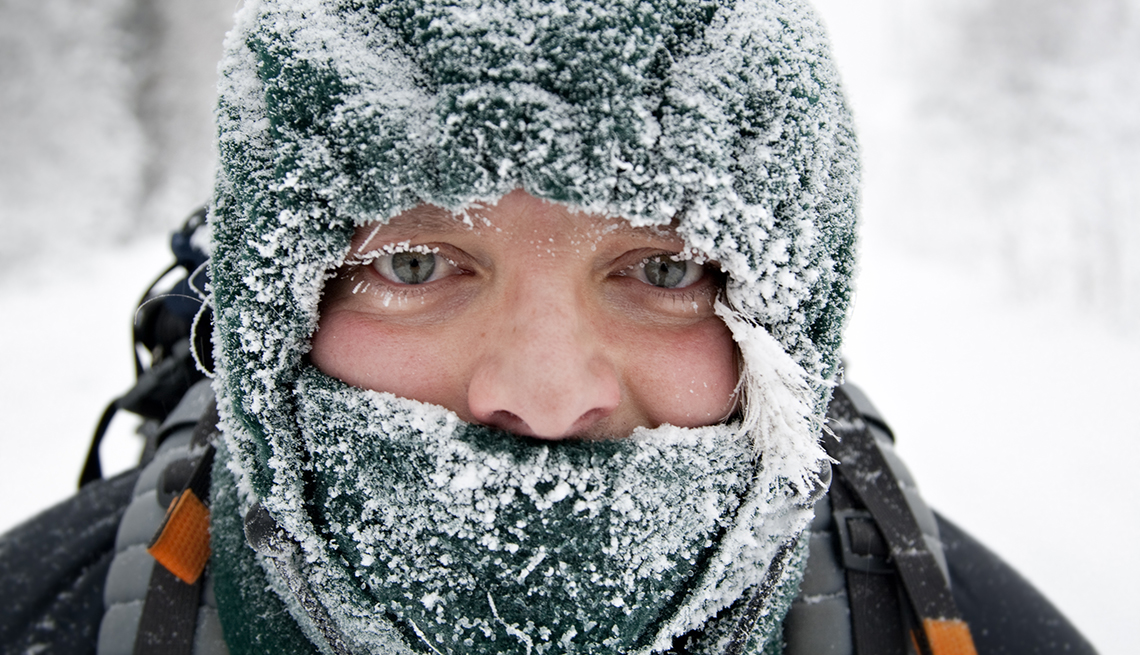AARP Hearing Center
As you bundle up against winter's cold, don't forget to keep up the fight against COVID-19, including wearing a face covering, as recommended by the Centers for Disease Control and Prevention (CDC).
"In cold weather, wear your mask under your scarf, ski mask or balaclava,” the CDC recommends.
Multilayer cloth masks have been found to block as much as 70 percent of fine droplets exhaled when you sneeze, speak or breathe. These droplets, also known as aerosols, can travel farther than heavier droplets — posing a greater threat of infection if they contain the coronavirus. Because so many people are asymptomatic, public health experts and federal leaders have urged all Americans to wear a mask to reduce the chances of spreading the virus to others.
Researchers have also found that face coverings offer some protection to the wearer against breathing in virus-laden aerosols.
CDC guidelines stress that face coverings are just one of the precautions people should take to slow the spread of the coronavirus. They also recommend staying at least six feet apart from others who don't live with you, avoiding crowds and poorly ventilated indoor spaces, and washing your hands often with soap and water (substitute hand sanitizer when soap isn't available).
When it comes to face coverings, researchers have found that multiple layers of fabric work better than a single layer. In fact, single-layer face coverings aren't very effective at all in blocking aerosols. The face covering should also fit snugly over the mouth and nose — any gaps provide an easy escape route for droplets. That's why the CDC has recommended against wearing masks equipped with exhalation valves or vents, which are often used by construction workers to protect against dust.
"The purpose of masks is to keep respiratory droplets from reaching others to aid with source control,” the CDC says in its guidelines. "However, masks with one-way valves or vents allow air to be exhaled through a hole in the material, which can result in expelled respiratory droplets that can reach others."
Why scarves, ski masks and balaclavas fall short
Scarves, ski masks and balaclavas may provide a barrier against a blustery wind, but they aren't designed to block aerosols. Neoprene ski masks typically don't cover your nostrils and have dozens of small holes across the mouth to make it easier to breath. Balaclavas come in a variety of designs but often don't cover the mouth or nose, and they are usually made of a single cloth layer. Scarves may also be a single layer of fabric and aren't necessarily worn over the mouth and nose.
The CDC says a gaiter, popular with runners, can be used as a face covering, but they suggest folding it to create a double layer of protection against the spread of the coronavirus.
Wintery weather can also create its own problems. The CDC suggests carrying a spare face covering to replace your mask if it gets damp. A wet mask can make breathing more difficult — and it may not be as effective at blocking droplets.


































































